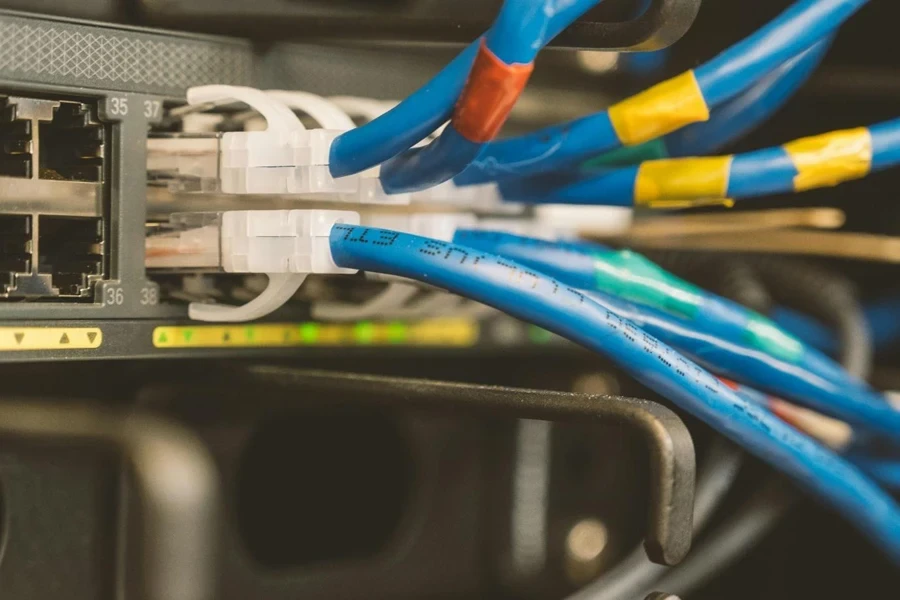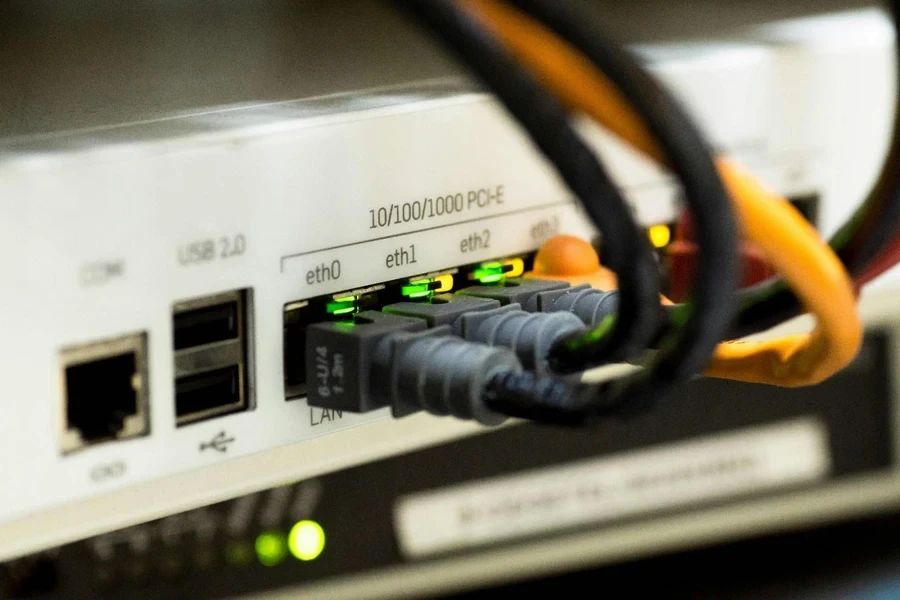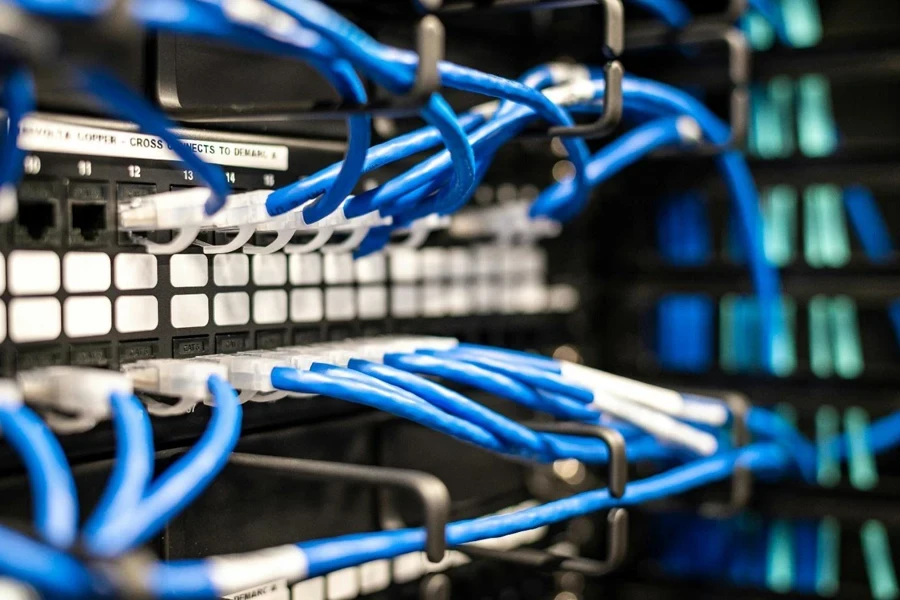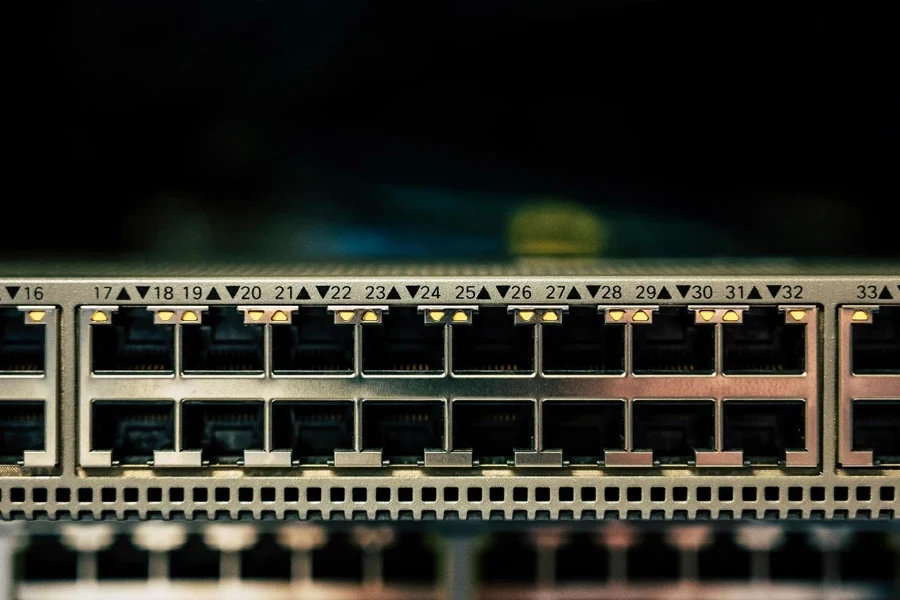Modern networking infrastructure heavily depends upon network switches as they facilitate communication and effective data transfer within business settings. Today’s rising usage of cloud services and IoT devices necessitates high-speed switches like never before. It is imperative for businesses aiming to enhance their connectivity solutions and stay ahead of the curve in technology trends related to network switches. This article delves into the changing dynamics of the network switches sector by shedding light on the advancements in technological trends that are propelling market expansion. By keeping up-to-date with the information, professional purchasers can make choices that improve the efficiency and dependability of their network.
Table of Contents
● Navigating the network switches market: Current trends and projections
● Pioneering advancements in network switch technology
● Market leaders: The top network switch models of 2024
● Conclusion
Navigating the network switches market: Current trends and projections

Market growth trajectory
The worldwide market for network switches is expanding, with an expected increase in market size from $33 billion in 2023 to $45.5 billion by 2028 at a growth rate of 6.6%. This upward trend is attributed to the increasing requirement for data centers due to expanding cloud services and artificial intelligence technologies. The uptick in transformation projects across sectors and the escalating demand for fast and dependable network infrastructure are also major factors driving this growth. Enterprises are increasingly embracing cloud-based services, leading to a growing need for network switches that can manage large data volumes and maintain uninterrupted connectivity.
Regional market dynamics
The network switches market is projected to experience growth in the Asia Pacific region in the coming years. Countries such as China, India, and Japan are leading the way due to increased investments in data center infrastructure and small and medium-sized businesses’ widespread adoption of digital technologies. North America continues to hold a key position in the market with input from key players, like Google Cloud Services and Microsoft, who are continuously expanding their data center presence. Europe also has an impact, as markets in Germany, the U.K., and France fuel demand mainly in the finance and manufacturing sectors. The worldwide drive for global innovation and the growing use of the internet is fueling demand for network switches in these areas.
Pioneering advancements in network switch technology

Embracing software-defined networking (SDN) and intent-based networking (IBN)
Software-defined networking (SDN) revolutionizes network management by adding programmability to the network infrastructure level and changing how networks are operated. The fundamental use of APIs by SDN controllers enables network administrators to centrally implement policies and adjust traffic flows dynamically based on needs. This flexibility allows for capabilities such as network slicing that divides a physical network into various virtual networks catered to specific applications or services. On the other hand, intent-based networking (IBN) utilizes machine learning algorithms to forecast network activities and modify settings automatically to achieve predetermined business goals. IBNs operate through a closed-loop approach as they gather data, examine it, and independently make decisions to uphold network performance, security, and adherence to regulations. Such tools prove useful in settings like data centers by cutting down manual setup tasks and boosting operational effectiveness.
The rise of high-performance Ethernet switches

The rising usage of 100 Gigabit Ethernet (100GbE ) and 400 Gigabit Ethernet (400GbEs ) switches reflects the increasing need for bandwidth in today’s networks. These advanced switches leverage state-of-the-art ASICs (Application-Specific Integrated Circuits) to manage high data flow efficiently, reducing delays and enabling networks to accommodate the traffic from cloud apps data analysis and AI tasks. Sophisticated functions such as deep packet inspection (DPI) and Quality of Service (QoS) controls are built into these switches to manage network traffic accurately and prioritize essential data streams effectively. Furthermore, incorporating 25Gb and 50Gb Ethernet interfaces provides budget-friendly choices for businesses aiming to expand their networks gradually. This presents a pathway to upgrade from 10Gb Ethernet setups without requiring a full-scale replacement.
Power over Ethernet (PoE) advancements
The Power over Ethernet (PoE) technology has undergone advancements. It can now provide up to 100 watts per port following the IEEE 802.3bt standard upgrade. This enhanced power provision allows for an array of devices to be supported, such as wireless access points for improved performance, IP cameras equipped with pan–tilt–zoom features, and networked LED lighting systems. Modern PoE switches come with power management capabilities, like allocating and monitoring power per port to optimize power distribution among all connected devices and guarantee that crucial equipment gets power even during high-demand situations. Moreover, date PoE++ switches include enhanced safety functions such as detecting power signatures and managing thermal issues to safeguard the network infrastructure and connected devices from malfunctions and overheating. These progressions establish PoEs as a key component in constructing expandable and energy-efficient network infrastructures.
Market leaders: The top network switch models of 2024

Cisco CBS350 series
The Cisco CBS350 series stands out in the market due to its mix of performance capabilities and support for Power over Ethernet (PoE). The series provides ample networking solutions for medium businesses with up to 48 Gigabit Ethernet ports and 4 SFP+ 10Gb Ethernet ports available for connectivity options. The fanless design integrated into many models ensures a quieter and more efficient operation, making them well-suited for office settings. The CBS350 series stands out for backing PoE+ (802.3at), providing a maximum of 30 watts per port, essential for smoothly running devices like IP cameras or VoIP phones and wireless access points. It also shines in management with a user web-based interface and backing for Simple Network Management Protocol (SNMP), making network infrastructure deployment and monitoring easier.
HPE Aruba switches
The HPE Aruba switches are known for their Layer 3 routing functions that help manage traffic and boost security measures. For example, the Aruba CX series offers segmentation, enforcing policies across wired and wireless environments without requiring manual input. This feature is especially useful in networks spread across locations where having consistent security measures is vital. Moreover, these switches use automation powered by AI to enhance network performance and minimize intervention for troubleshooting purposes. The Aruba switches come with multi-gigabit Ethernet support to meet growing crowded settings effectively in overcrowded settings like schools and big companies. With the added Aruba Central cloud-based management platform feature, the switches offer a network overview for remote control and instant data analysis.
Budget and efficiency leaders
Regarding balancing cost and performance for businesses, TP-Link and NETGEAR stand out as top contenders in the budget-friendly segment. For instance, TP‐Links TL SG1024DE is a 24-port Gigabit switch that boasts energy-saving technology to cut power usage by up to 40%, making it a great choice for businesses that want to save costs. Moreover, this switch offers features like port mirroring and VLAN support, usually seen in pricier models, bringing functionalities within reach at a lower price point. The Netgear GS108T offers 8 Gigabit Ethernet ports and a ProSAFE Lifetime Protection feature for offices and workgroups seeking dependable performance in a fanless design that operates quietly. Gaining attention well is TRENDnets TPE TG44G 8 port PoES switch that boasts a power allocation of 120 watts among its ports, enabling support for various PoES devices all at once. These models are popular among small sized businesses because they offer a good balance of cost-effectiveness and performance while providing a range of useful features for optimizing network infrastructure without straining the budget.
EnGenius ECS2552FP and TP-Link TL-SG3210XHP-M2
The EnGenius ECS2552FP is a powerful switch crafted for settings that demand extensive PoP support. It features 48 Gigabit Ethernet ports and a hefty 740W power allocation, which is perfect for accommodating numerous PoP devices and is ideal for video surveillance setups and extensive installations. The switch is also equipped with 4 SFP+ 10Gb Ethernet ports for high-speed capabilities and ensuring swift connectivity throughout the network. In the world of networking gear lies the TP-LINK TL SG3210XHP M2. An 8 port switch that boasts 2 speedy 1Gb ports and a robust 240 watts of PoEs for those offices seeking connectivity without committing to a full-blown 10Gb network overhaul. Both versions focus on cloud management features that empower admins to oversee and manage networks from afar for added ease and productivity.
Conclusion

The continuous progress in network switch technology is leading to transformations in the network infrastructure scene with advancements such as combining SDN and IBN and creating top-notch Ethernet switches with PoE capabilities. These are key drivers of change in the industry landscape. The emergence of leading models like the Cisco CBS350 series and HPE Aruba switches raises the bar for performance efficiency and scalability in today’s evolving networking solutions and connectivity demands. Keeping up with these changes is vital for businesses striving to stay competitive in our more interconnected world.




